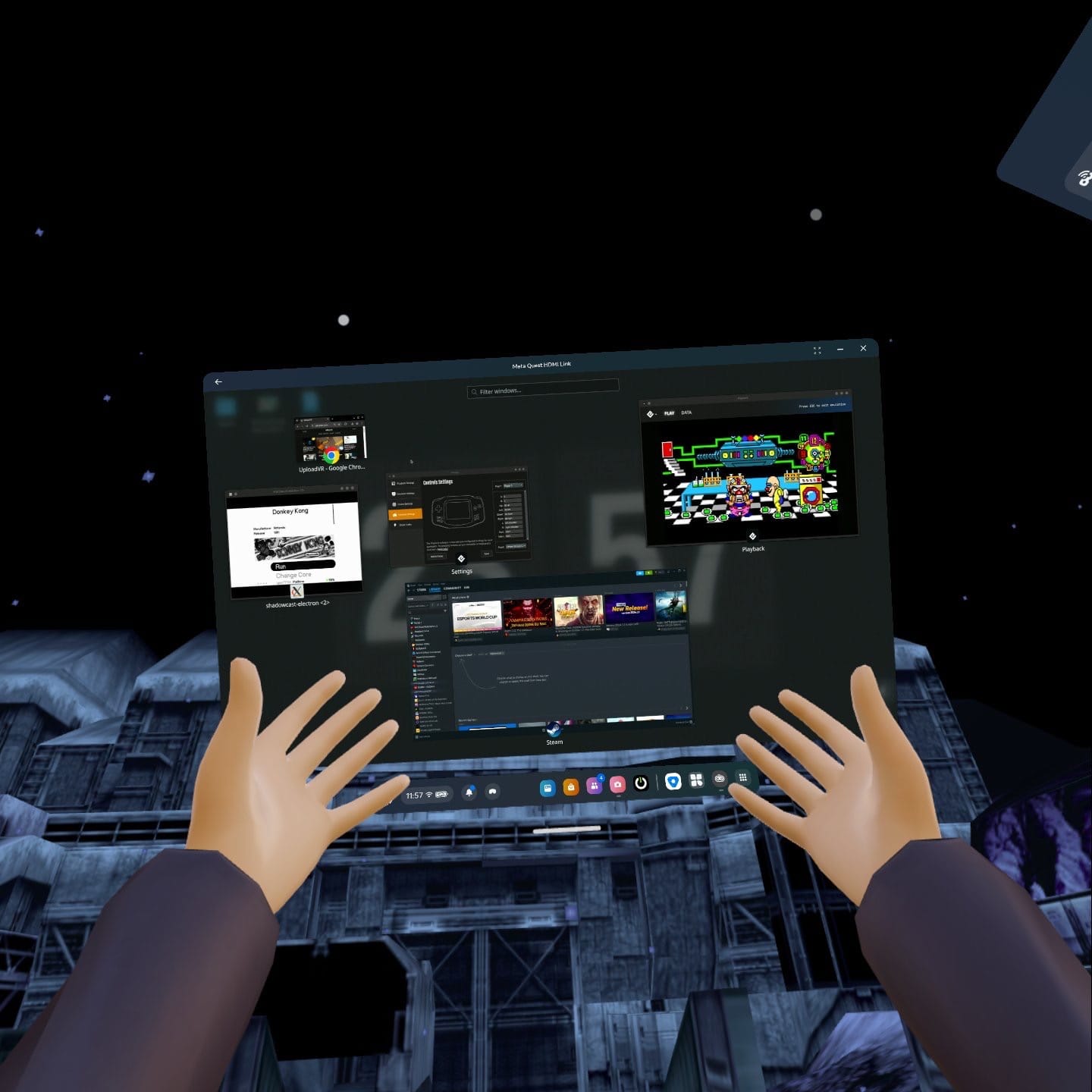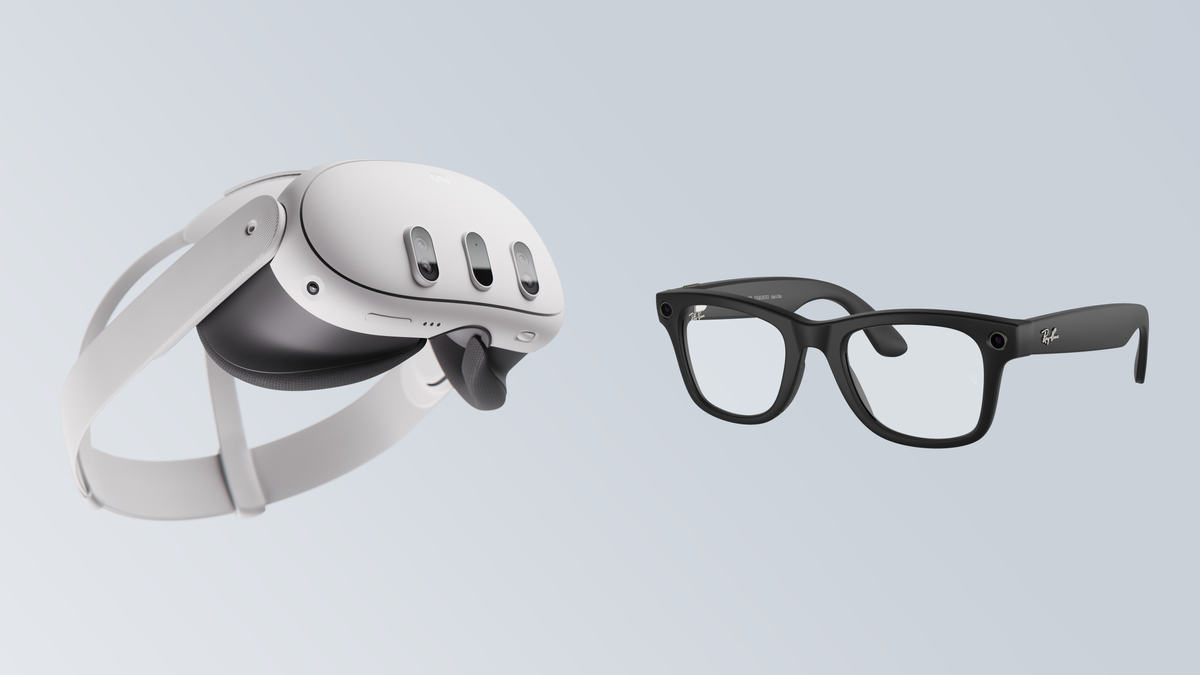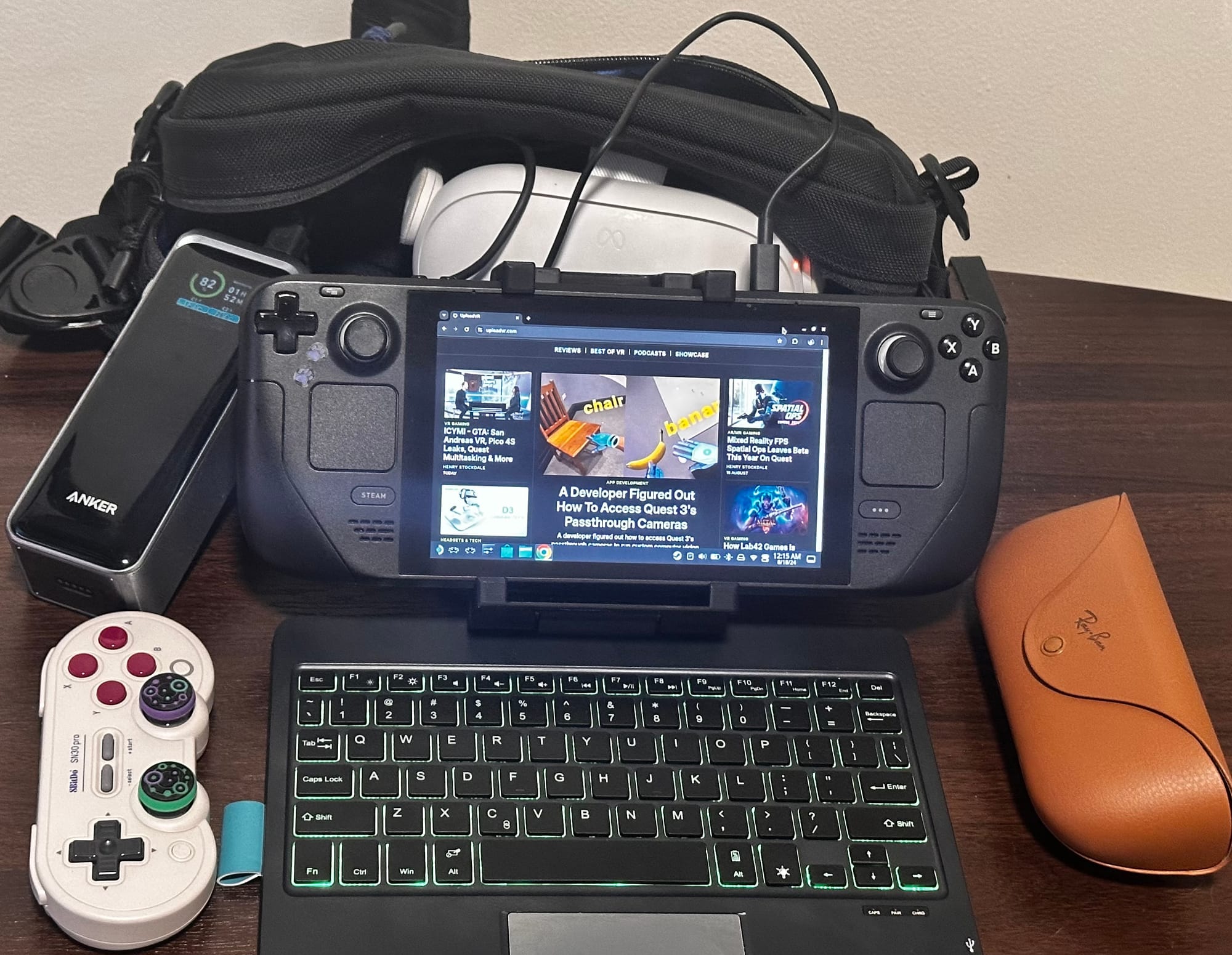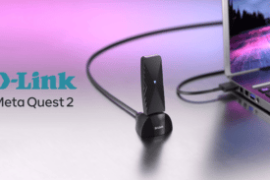We’ve written some of our articles from VR. Not a lot, mind you, but it is not something unusual for UploadVR writers to attempt it.
David Heaney wrote his review of the Apple Vision Pro from inside the headset. This article, too, was written inside a VR headset – the much more affordable Meta Quest 3. More precisely, this article was written on a Steam decktop from inside the Quest 3.
I’m using:
- Meta Quest 3 128 GB Model
- Steam Deck 512 GB LCD Model
- Decktop bluetooth keyboard and trackpad
- 1 TB Micro SD card
- Shadowcast 2 HDMI capture card
- Apple iPad AV Adapter with HDMI out and USB-A port
- Anker 6-in-1 Hub with HDMI out, USB-C power delivery in and USB-A ports
- Long USB-A to USB-C cord capture card video/audio transmission
- Long USB-C cords for power delivery
Steam Deck is wired to Quest 3 and the Deck’s display is turned off for private viewing inside VR. Quest 3, instead, shows a large compressed 1080p virtual display wherever I want to put it. I’m typing on the Decktop keyboard, connected via Bluetooth to the Steam Deck.

We’ve already covered how to output HDMI devices to Quest with a capture card, though HDCP copyright protections will block some uses. In the case of this Steam desktop floating inside the Quest home space, typing on a giant display can be easier than squinting at the tiny screen and craning your neck down for hours. The decktop can make up for its tiny physical screen with a much larger virtual one when docked into VR mode via the tiny Shadowcast 2 capture card.
To any onlookers, it looks like the Steam Deck is off.
You can easily pair a mouse, keyboard or gamepad with the Steam Deck as well for more input options beyond these, and a mouse may be necessary here as the trackpad on this decktop isn’t ideal in many scenarios.
0:00
Steam Deck supports setting Steam’s desktop to render at up to 4096×2160 at 30 Hz, even though the Shadowcast 2 signal received by the Quest is 1920×1080 at 50-60 Hz. I’ve tried a couple different render resolutions and am typing this at 2560×1440 rendering at 60 Hz. There’s a loss in quality in the compression pathway, but the path offers a nice amount of space for multiple windows with text size in Google Chrome increased to 200 percent for this writing.
For a game like Stardew Valley – a game with very little action to be impacted by input or display lag– the 4K canvas (compressed down here multiple times before it hits your eyeballs) still lets you see much of your farm at one time. It’s a trade-off that a gamer won’t make if they’ve just bought a recent generation console or NVIDIA graphics card to drive cars or planes on true 3K or 4K displays with high frame rates.
It is, however, a very cool option to play some games in bed without disturbing your partner in the slightest. Have a cat or dog? Let ’em climb on your chest because they won’t block your screen.
I’ve used Steam Deck and Quest 3 in an assortment of scenarios that previously only Apple Vision Pro has been interesting enough to use in.
I could leave the Steam Deck handheld PC on my bedside table, or in the living room, with its screen off while I surfed the web, watched movies, and played games projected from it to a surface in VR. The video and audio from HDMI comes via the USB cord running up to my headset. You could pack the handheld and its USB hubs into a bag with a big battery pack and head out into the world with a headless Deck accessible inside Quest at any time.
If Apple can use a cord like that to power headset, Meta is starting to show how it can use USB to pipe around Steam in its rawest form yet as an incredibly potent complement to the games on Meta’s Horizon store. You could grab a Resident Evil home space from SideQuest for ambiance, boot up Resident Evil 4 for Quest and keep Resident Evil 4’s remake playable as a floating screen from Steam.
When I travel next, I’m taking Steam Deck with Meta glasses, Meta headset, and the decktop with VR powering my personal computing.

My other option is to take a $3,500 Apple Vision Pro and Macbook Air. That setup should be able to get a game like Stardew Valley running at a higher resolution for a cross country play session on a flight, and wirelessly on Vision Pro to boot! I can also get my iPhone mirroring in VR wirelessly with minimal effort too.
Steam Deck has more games I want to play, though, with handheld mode available in addition to decktop mode and deck-in-bag mode. And when I want to write an article for UploadVR, I can put on the VR headset for focus and privacy on a single task with a portable computer at the core of my experience that’s fundamentally more open than an iPad. iPad, of course, is the nearest competitor here with Apple’s magnetic docking keyboards offering a smooth handoff from tablet mode to laptop mode. Steam Deck isn’t there yet from a software perspective, but the Steam Decktop with Quest can still win over users even with the clumsier dock attachment and web of USB hubs. If you’ve ever felt a little too tethered to Google, Apple, or Microsoft, you’ve got an unexpected team-up to think about here.
Meta and Valve offer a fascinating path forward — the decktop. Consider the prospect of back-to-school shopping. If you know a young person with computing needs, would you get them a Chromebook, Macbook, iPad, Microsoft Surface or splurge for a gaming laptop or desktop?
I propose the Steam decktop is easy to use, fun, and if the recipient opens desktop mode even once they’re going to learn more about the role of open source in modern life than via an iPad with screen time or a Chromebook with services tethered to the network. I found myself pretty surprised how enjoyable and easy it is to customize the Linux desktop exactly to my liking. Then take SteamOS from Steam Deck and plug it into a Quest 3’s Horizon OS to superpower your experience. To be clear, you won’t get SteamVR games this way from a Steam Deck but you will get its flatscreen content in some places where wireless Steam Link may not be possible or convenient.
The kids can wave goodbye to Apple, Google and Microsoft from their VR headsets. This is the way. I’ll also note that some headsets, notably early HTC standalones and AR glasses, function in similar ways with video in – but the combination of Steam Deck with Quest 3 standalone VR is a potent approach to the idea of a VR laptop.

I’ll have a follow-up article covering a separate set of tests considering latency and compression for casual gaming with a short-range wireless HDMI transmitter and receiver added to the mix to bring in games from PS4 and Nintendo Switch.






